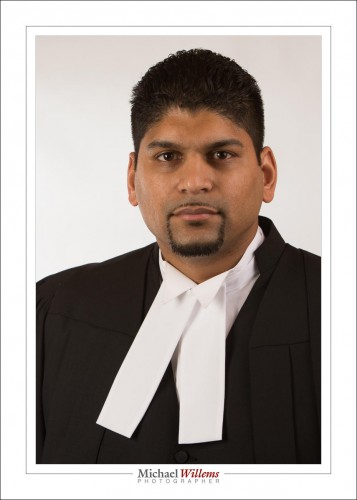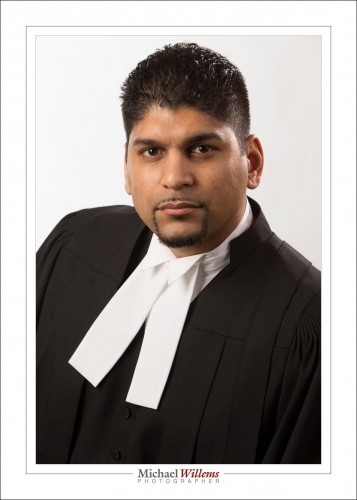A future new book will be about photographing people. One shot you need to learn is the standard headshot. And today, a tip for these headshots.
Look at this (unfinished) image of new lawyer Arvin (congratulations!), from a shoot last night:
And now look at the second (also unfinished) photo, taken a second later:
Both are fine – but the second photo is very different, isn’t it?
I have lit it differently, to create some modelling. Modelling means “showing that it has three dimensions”. The first face looks flat; the second one looks like an actual, three-dimensional, face. Lighter on our left, darker on our right. The lighting in the first photo might be more suitable for a beauty shot of a woman, perhaps – but it shows little depth.
I also added the hair light in the second picture – the “shampooey goodness™”.
But there’s more. I have also asked the subject to
- drop his shoulder (the one on our right);
- aim his head toward me, i.e. stick it out like a giraffe. That feels weird, but it looks good in photos (provided I am shooting almost straight one);
- tilt the top of his head slightly to our left (opposite direction to the dropped shoulder).
This gives us a nice strong jaw line and a more personal look. Mission accomplished. Now I can go finish the pictures (crop, rotate, adjust exposure, fix small flaws, etc).
The moral of this post: both lighting and positioning (not “posing”) of your subject are of great importance when shooting a portrait. Learning portraits is this, as much as the technical bits.
___
TIP: Do start with my books to learn the technical and lighting techniques: www.michaelwillems.ca/e-Books.html


